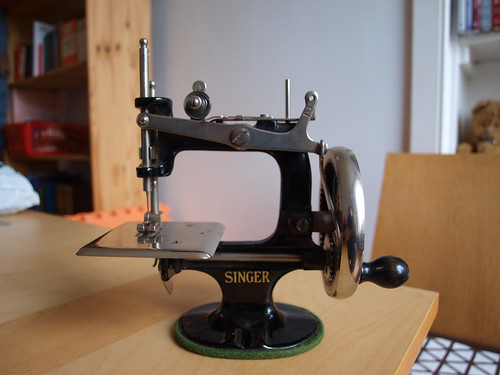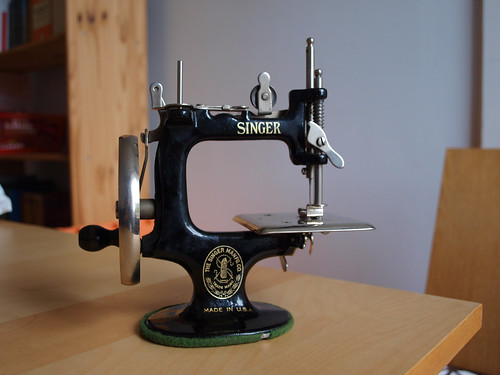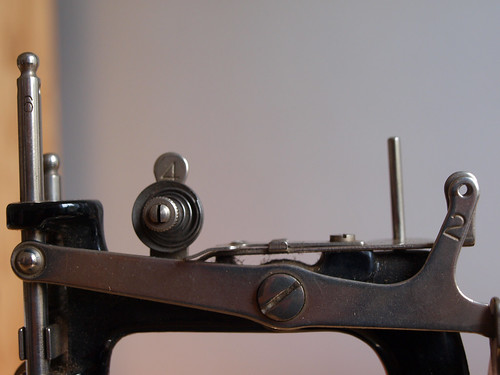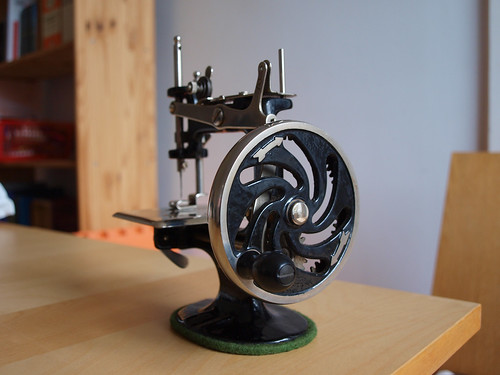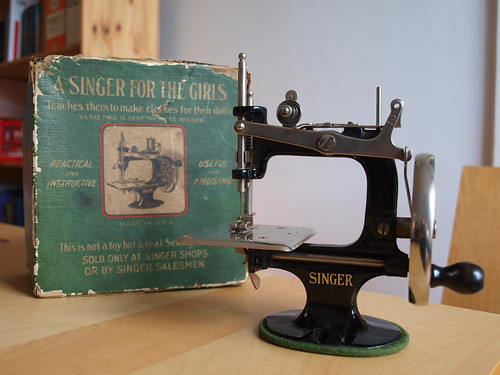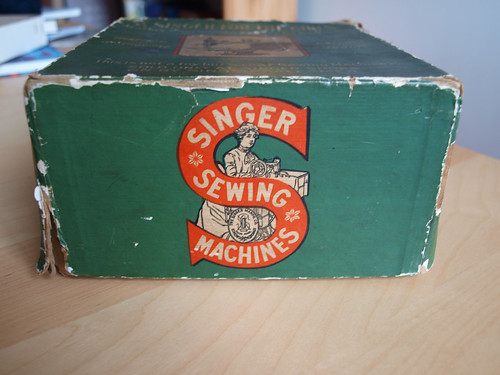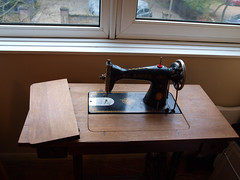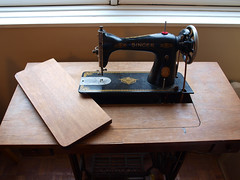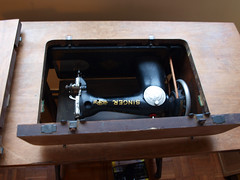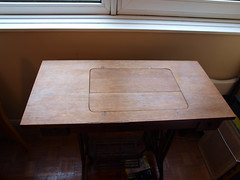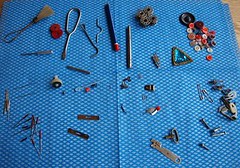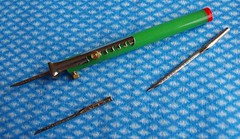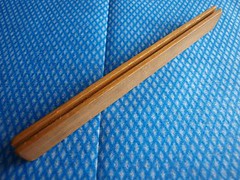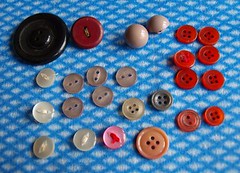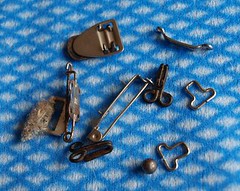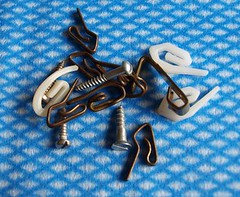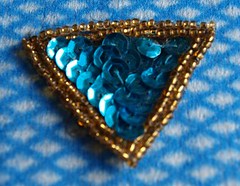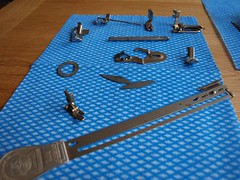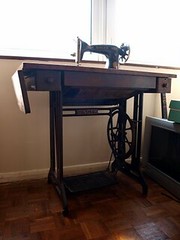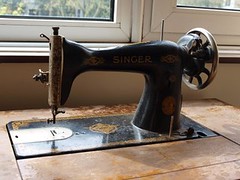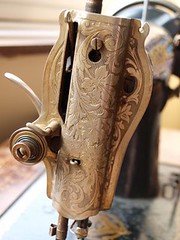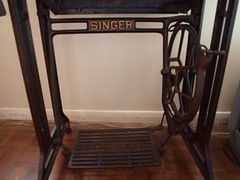Possible alternative title for this post: You need three before it counts as a collection, right?
A trip to an antiques and collectibles fair recently ended up with me bringing home another vintage sewing machine:
It is another Singer, this time the hand-cranked No. 20. It is probably not clear in the pictures but it’s only about 6″ high since it was designed a child’s machine.
Like my first vintage machine, it was in pretty good condition when I bought it and just needs a little bit of oil and cleaning.
There are lots of nice little touches due it to having been designed as a first machine, like the clear numbers shown below to guide you in threading the machine…
… and the arrows to show you which direction to turn the hand-wheel.
Unfortunately, these machines don’t have serial numbers so they’re not quite as easy to date as the full-size Singers. A little bit of internet research leads me to believe that this machine was probably made some time after 1926 and before the 1950’s so from the same time period as my treadle machine.
One of the best things about this machine is that it still has its original box:
The caption above the picture on the front says “As the twig is bent, so the tree is inclined.” The machine itself is described as being both “Practical and instructive” and “Useful and amusing”. I certainly hope so!
